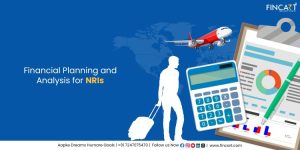Sound financial decisions begin with clarity—not assumptions. Whether you’re a company evaluating future opportunities, a financial advisor Bangalore offering guidance, or an investor reviewing portfolios, financial models provide the structure needed to assess value, risk, and performance. These models are widely used in everything from portfolio management services to corporate strategy.
Built on real data and practical insights, financial models help businesses plan budgets, estimate valuations, and prepare for funding. For individuals, especially those working with the best financial advisors near me or consulting a mutual fund advisor near me, these models support smarter, goal-driven investment strategies.
In this article, we look at 10 essential financial models—from forecasting and budgeting to mergers and IPOs—and how they support real-world financial decisions.
What is Financial Modeling?
Financial modeling is the process of building a structured, spreadsheet-based representation of a company’s financial situation. These models are used to:
- Project future financial performance using historical data and assumptions
- Evaluate profitability, cash flow, and risk under different scenarios
- Support decisions related to investments, budgeting, and strategic planning
Whether used by a business internally or provided through portfolio management services, financial models help answer key questions like:
- How will the business perform under various market conditions?
- What is the potential return or risk of a particular investment?
- How will changes in revenue, cost, or debt impact overall performance?
In essence, financial modeling enables professionals—ranging from CFOs to mutual fund and financial advisors in Bangalore—to make informed, data-driven decisions.
Why Financial Modeling Matters Today
With rising inflation, unpredictable interest rates, and frequent market disruptions, financial decisions can no longer rely on instinct alone. That’s where financial modeling plays a vital role. It gives both businesses and investors the clarity needed to make confident, informed choices.
Financial modeling helps:
- Evaluate risks and build contingency strategies before problems arise
- Understand financial health, using both historical and real-time data
- Present investment potential to stakeholders and attract new capital
- Determine accurate valuations, beyond what the market sentiment may suggest
- Plan realistic budgets and set clear, measurable financial goals
- Run scenario analyses, including stress testing during economic downturns
Whether used by large corporations or by individual investors, the demand for accurate projections and financial insight is growing.
Today, even retail investors working with a mutual fund advisor near me, subscribing to portfolio management services, or consulting a financial advisor Bangalore expect this level of financial clarity.
In fact, some of the best financial advisors near me use financial models to guide clients through market uncertainty with greater precision.
10 Common Financial Models and Their Use Cases
Financial models are like blueprints for decision-making—whether it’s a multinational preparing for a merger or an individual investor evaluating portfolio performance. Below are 10 widely used models that financial professionals and portfolio management services rely on to make informed choices.
1. Three-Statement Model
This is the backbone of most financial analysis. It integrates a company’s income statement, balance sheet, and cash flow statement into one dynamic model. By linking the three, it helps analysts understand how changes in revenue or expenses affect cash flow and equity over time.
Use Case: Building annual financial projections, performing due diligence, or serving as the foundation for advanced valuation models.
2. Discounted Cash Flow (DCF) Model
A favorite among valuation experts, the DCF model calculates the present value of expected future cash flows, discounted by a risk-adjusted rate. It’s a staple for analysts and financial advisors in Bangalore to determine a business’s intrinsic worth—especially when market prices seem disconnected from fundamentals.
Use Case: Evaluating investment opportunities, especially for long-term buy-and-hold strategies.
3. Merger & Acquisition (M&A) Model
This model assesses the financial impact of a merger or acquisition, particularly whether the transaction is accretive or dilutive to earnings per share (EPS). It also considers synergies, goodwill, and restructuring costs.
Use Case: Used by corporate finance teams and investment bankers before finalizing deals.
4. Initial Public Offering (IPO) Model
Going public requires more than just investor interest—it needs airtight numbers. The IPO model estimates valuation, share pricing, and capital raised, taking into account investor appetite and company performance.
Use Case: Ideal for pre-IPO companies and portfolio management services looking to identify high-potential early-stage investments.
5. Leveraged Buyout (LBO) Model
Used extensively in private equity, the LBO model explores the feasibility of acquiring a company using a high debt-to-equity ratio. It assesses whether the acquired firm’s cash flows are sufficient to service the debt and generate returns.
Use Case: Strategic buyouts where the acquirer seeks maximum returns with minimal equity investment.
6. Budget Model
Think of this as the organization’s financial roadmap. Budget models forecast income, operating costs, capital expenditures, and align spending with strategic goals. For individual investors, tools derived from budget models are often customized by the best financial advisors near me to track personal finance goals.
Use Case: Annual or quarterly financial planning, both corporate and personal.
7. Forecasting Model
Forecasting models help predict future revenues, costs, and demand trends using historical data and analytics techniques like regression analysis. These are critical for businesses planning for growth—and equally useful for a mutual fund advisor near me advising on long-term investments.
Use Case: Sales forecasting, resource allocation, and client portfolio planning.
8. Option Pricing Models
Options and derivatives demand precision. Financial professionals use models like:
- Black-Scholes
- Binomial Trees
- Monte Carlo Simulations
These tools calculate the fair value of options, considering volatility, time to expiry, and market variables.
Use Case: Risk management, pricing employee stock options, or trading complex financial instruments.
9. Consolidation Model
For companies with multiple subsidiaries or business units, this model merges all financial statements into a single, unified report. It helps ensure regulatory compliance, provides a bird’s-eye view of company-wide performance, and informs executive decisions.
Use Case: Used by holding companies and multinational corporations to streamline financial reporting.
10. Sensitivity Analysis Model
Not a model per se, but a technique applied across many models like DCF or Budgeting. Sensitivity analysis tests how different variables—interest rates, tax rates, inflation, or growth assumptions—impact outcomes.
Use Case: Used by CFOs and financial advisors in Bangalore to stress-test assumptions before making major financial commitments.
These models aren’t just tools for Fortune 500 companies—they’re increasingly used in portfolio management services, retail investing, and personal financial planning.
Whether you’re working with the best financial advisors near me or an experienced mutual fund advisor near me, understanding these models can empower smarter investment decisions.
How to Choose the Right Financial Model
Not all financial models are created equal. Choosing the wrong one can lead to costly decisions—whether you’re a business leader preparing for expansion or an investor planning your next move. So, how do you pick the right model?
Here’s what you need to consider:
- Your Goal:
Are you budgeting for the next year, pitching to investors, valuing a merger, or launching an IPO? Each scenario demands a different model. - Data Availability:
Some models rely heavily on historical financials (like forecasting models), while others—such as IPO or DCF models—need forward-looking assumptions and market research. - Industry Standards:
- Tech companies often prefer Discounted Cash Flow (DCF) models for their high growth potential.
- Real estate firms lean on cash-flow-based budgeting or leveraged buyout models.
- Manufacturing companies may benefit from three-statement models for operational clarity.
- Time Horizon:
Short-term decisions (like monthly budgeting) require simple, flexible models. Long-term planning (like retirement or capital investment) demands comprehensive financial projections.
For a more tailored approach, subscribing to portfolio management services can ensure you’re using the most effective model—aligned with your financial goals, risk appetite, and investment horizon.
Real-World Applications of Financial Models
Financial models aren’t just spreadsheet exercises—they drive real business decisions. Here’s how they are actively used across industries and scenarios:
Retail Sales Forecasting (e.g., for Diwali or Christmas)
Retail businesses use forecasting models to predict consumer demand during festive peaks. For example, a fashion brand may analyze past seasonal trends, consumer behavior, and inventory data to project how much stock is needed for Diwali sales.
These insights help optimize inventory management, marketing spend, and cash flow planning—minimizing losses due to understocking or overstocking.
Mergers and Acquisitions (M&A)
When companies plan to merge or acquire, they rely on M&A models to simulate the financial outcome of the deal. These models assess:
- Post-deal profitability
- Impact on Earnings Per Share (EPS)
- Debt servicing capability
- Synergy realization
For example, a pharmaceutical firm evaluating a merger might run EPS accretion/dilution analysis to determine whether the merger increases shareholder value. It’s a key part of due diligence.
Initial Public Offerings (IPO)
Companies planning to go public use IPO models to determine the ideal pricing of their shares. These models evaluate projected earnings, market conditions, competitor valuations, and investor appetite.
Let’s say a tech startup in Bangalore is preparing for an IPO—it would use financial modeling to justify its valuation, forecast future revenue, and structure the offer to attract investors. This is where working with an expert financial advisor or portfolio manager becomes crucial.
Investment Strategy & Risk Analysis
Portfolio management services leverage sensitivity and scenario models to help investors understand how changes in market variables—like interest rates, inflation, or currency fluctuations—can impact their portfolio.
For instance, if inflation spikes by 2%, a sensitivity model can show how that affects bond yields versus equity performance. Based on this, a mutual fund advisor near me might recommend shifting from long-duration bonds to short-term debt funds.
Internal vs External Financial Models
Financial models serve two distinct but equally important purposes—internal operations and external stakeholder engagement. Understanding the difference helps businesses and financial advisors align their modeling strategy effectively.
Internal Financial Models
These are used within the organization to support operational decision-making, resource planning, and performance tracking. They focus on internal processes and cost structures.
Common internal models include:
- Budget models – Help allocate resources across departments and set spending limits.
- Forecasting models – Predict revenue, expenses, and cash flow based on historical data.
- Consolidation models – Aggregate financials from multiple business units to give a unified view.
These tools are essential for CFOs, finance teams, and portfolio management services to make timely, data-backed decisions.
External Financial Models
These models are developed for external parties like investors, lenders, or analysts. They emphasize valuation, risk, and return potential.
Popular external models include:
- IPO models – Project future performance to support public listings and price discovery.
- LBO models (Leveraged Buyout) – Evaluate the feasibility of acquisitions financed with debt.
- Option pricing models – Used in evaluating derivatives and stock options, especially in equity-heavy companies.
Why Both Matter:
Whether you’re an enterprise CFO or working with the best financial advisors near me, having both internal and external models offers a 360-degree view of financial health—bridging day-to-day operations with long-term strategic planning.
Final Thoughts
Financial modeling is no longer just a corporate finance tool—it’s a decision-making compass for businesses and investors alike. Whether you’re a business owner preparing to scale or someone exploring investments through portfolio management services, understanding financial models gives you the edge. From start-ups planning IPOs to individuals consulting a financial advisor in Bangalore, these models shape smarter, faster, and more confident financial strategies.




